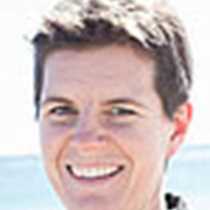Traveling south through Stephens Passage and Frederick Sound overnight, we awoke to discover the marshy coastline and forested hillsides of Thomas Bay out the window, site of our morning explorations ashore. Despite diligent spotting scope and binocular searching, none of the rumored moose were seen before breakfast, though seabirds proved abundant and diverse. Once on solid ground at Cascade Creek, we hiked uphill on a recently–and very nicely–rebuilt trail, traversing the temperate rain forest alongside a rushing stream. With high water levels due to summer rainfall, the waterfall and upstream gorge were dramatic, sending clouds of mist far into the trees and making conversation difficult over their volume.
We spent the afternoon in the town of Petersburg on Mitkof Island, home to Alaska’s sixth largest fishing fleet and where greater than 55 million pounds of fish are processed annually. Founded in 1897 by Peter Buschmann, this busy community of Norwegian heritage boasts a protected harbor, plentiful nearby fisheries, and historically a ready supply of ice from the LeConte glacier just to the south. Many activities were offered this afternoon, allowing individually-customized visits to this fascinating port. A flightseeing tour over the Stikine Icefield provided an incredible bird’s-eye view of the glaciers we experienced by inflatable boat yesterday. Some transferred to neighboring Kupreanof Island for a hike through the muskeg, where acidic conditions, year-round standing water, and peat accumulation yield unique plant communities. Encouraged to look at this environment on a more focused scale, they examined the small yet beautiful world of mosses and insectivorous plants. Still others took advantage of tours that emphasized photography or local fishing vessels, all told thoughtful and interesting glimpses into the Petersburg livelihood and story.
While at South Sawyer glacier yesterday, a sizeable piece of brash ice was collected and brought on board. In a friendly competition, our many young explorers estimated the date and time they believed it would be fully melted; less than 24 hours later, all that remained was a full bucket of fresh (and old) water! We crowned several “Masters of Glacial Meltology” this evening, celebrating all we’re learning together about the natural environments of southeast Alaska.







